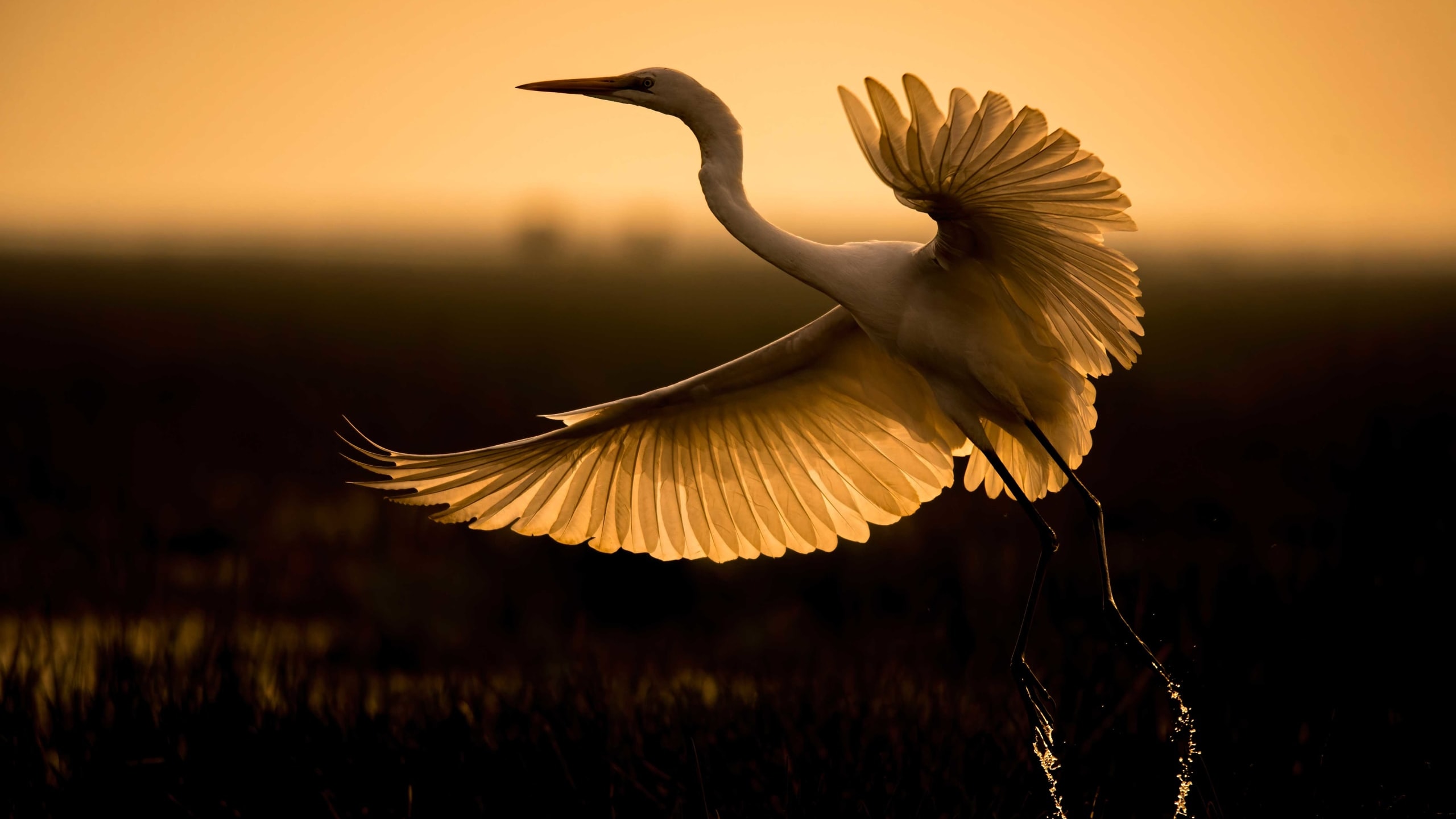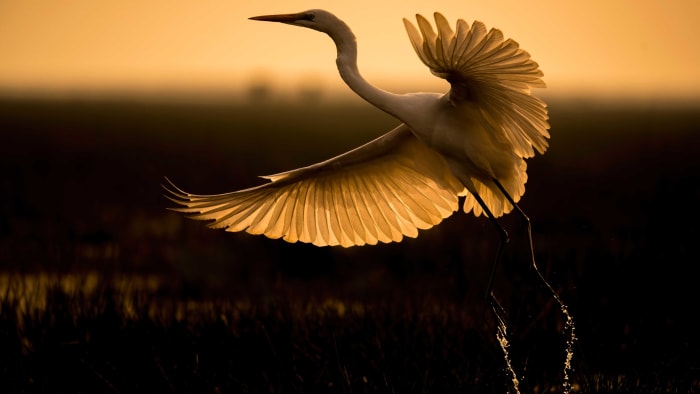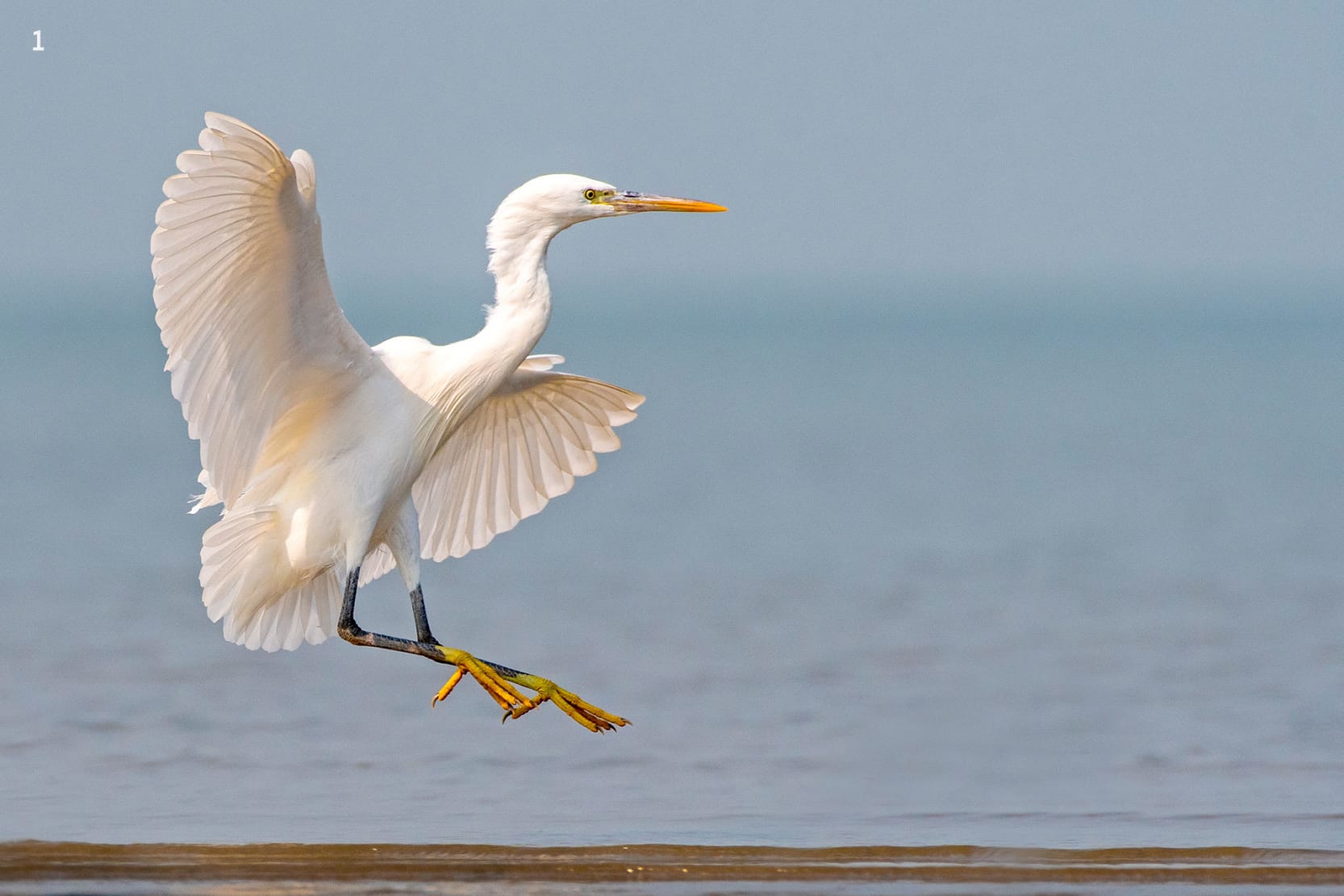 Listen to this article
•
15:34 min
Listen to this article
•
15:34 min
I sat perfectly still, my finger hovering over the shutter button. I’d been like that for over an hour, lying in wait. It would be over in an instant — I couldn’t miss the chance.
I was deep inside Salim Ali Bird Sanctuary, but I was not photographing a rare, glamorous bird. Instead, I was observing a flock of common cattle egrets browsing in a swamp.
Suddenly, triggered by something, they all took to the air — a flurry of white feathers hurtling towards me. Click, click, click. Soon, they were over my head, disappearing into the jungle.
Egrets are medium to large-sized herons with long, thin necks, sharp bills and dainty legs. They occur in almost every habitat type — forests, lakes, rivers, marshes, mangroves, tidal creeks, rocky coasts, coral beds, agricultural fields, grass banks, and even canals, tanks, and rubbish dumps. As a result, they eat a wide variety of creatures but primarily feed on fish, aquatic insects, crustaceans and amphibians.
These birds are seen walking around the Indian countryside, heads bobbing as they prance around with swagger. But we also see flocks flying over us in the sky, with their heads drawn back, in great formations. While roosting, many form colonies on tall trees. In wetlands, trees may look like they are fruiting egrets; that’s how many congregate there!
The gregarious nature of egrets is most visible during paddy harvesting time when farmers drive their enormous tractors through the fields. Their machines drive critters like worms, grubs and larvae out of the mud, providing easy pickings for egrets. The birds congregate around these tractors, squawking and pecking each other. Fights, if any, subside quickly, but sometimes, the birds take briefly to the air column, swirling and jabbing at each other.
When something, like the arrival of a snake, startles them, they will also take wing in a swarming vortex of white feathers. One wishes to be a farmer to view these birds at such close range!
Egrets change their plumage for their breeding season, to the delight of the Indian birdwatcher. Some sprout delicate plume feathers, while others change colour altogether. During this stage, they can be best compared to Lady Galadriel from the film franchise The Lord of the Rings.
Six species of egrets are found in India:

Cattle egret (Bubulcus ibis) 48-53 cm
Probably the egret that most Indians are familiar with, the cattle egret often appears around domestic cattle, walking with them and munching critters that these large animals scare out of the grass. Sometimes, they hitch a ride on the backs of these bovines and even rhinoceroses in Assam. Best recognised by their short yellow bill (which turns bright red in the breeding season), they also sport orange head and breast feathers during breeding season. While it might be problematic to anthropomorphise these birds, one can’t help but imagine they hold a perpetual critical expression of an old lady scrutinising you for having dirt on your nose. Photos: Abhishek Das (1), Hayath Mohammed (2)
Cover photo: Great egret. Photo: Arpan Saha

Little egret (Egretta garzetta), 55-65 cm
This is one of the more elegant egrets, with a black bill and legs. During its breeding season, it grows “mantle plumes”— wispy feathers below its nape that give it an ethereal look. It can be found singly or in large flocks across various habitats, including agricultural fields, marshes, lakes, rivers, mangroves, estuaries, and everything in between. This is my favourite bird because it has the least critical expression of all the egrets and sometimes looks like it is smiling. Photos: Soumabrata Moulick

Intermediate egret (Ardea intermedia) 65-72 cm
Typically found in small flocks, it is larger than the little egret and smaller than the great egret — a true intermediate. Its bill is yellow, and its lores (the area on the side of the head between bill and eye) turn yellow-green during courtship. Like the little egret, it grows wispy plumes on its breast and mantle. Some have observed this bird hunting by slowly stalking its prey — primarily fish and amphibians. Photos: AbhishekMittal/Shutterstock

Great egret (Ardea alba) 90-102 cm
Fitting its name, this is the largest egret of them all, sometimes even surpassing 100 centimetres! Its long neck with a pronounced kink accommodates its great size. During the breeding season, its lores become blue and its tibia reddish. Perhaps keeping with its stature, this bird is less sociable than its egret counterparts and prefers to hunt alone. Here, a great egret and oriental darter squabble over fish at Keoladeo National Park (Bharatpur). This bird roosts communally on large trees and is found in shallow wetlands, rivers, lakes, mudflats, mangroves, marshes, and estuaries (as seen in the lead image atop this page from Mangalajodi, Odisha), and even at coral reefs. Photo: Dhritiman Mukherjee

Western reef egret (Egretta gularis) 55-65 cm
An inhabitant of coasts, the western reef egret, or western reef heron, is found along seashores, estuaries, mangroves, and tidal creeks, sometimes even in freshwater. They are stunners with significant variation in plumage. The palest morph (1) is typically a white, stately bird with a yellow bill. The dark morphs (2 & 3) sport a chic look in shades of slate grey with white throats. These birds are comparable to the little egret in size but similar to the great egret in behaviour (they prefer to be alone). While hunting, they may run around, jump and frolic or wait patiently for the ebbing tide, standing hunched in the water to spot their catch. Photos: Neel Sureja

Pacific reef egret (Egretta sacra) 58 cm
This bird lives in the Andaman and Nicobar Islands (although some have also reported it from Northeast India). The bird is polymorphic, coming in white, grey, and shades in between. Dark morphs like this individual flying near Neil Island are typically dark grey all over. This bird is similar to the little egret in size. It makes a grunted “ork” sound while feeding and a harsh “squawk” when disturbed but is otherwise very similar to the western reef egret in mannerisms, preferring rocky coasts, coral beds and sandy beaches. Photo: Arpandhar, CC BY-SA 4.0
Despite or perhaps because of its ubiquity, egrets are overlooked. People rarely stop and marvel at them. They remain in the background, which is a pity, for they are such beautiful creatures. A delicate heron with stark white feathers atop balletic legs, they are the picture of poise and grace.
We live in an era where rare animals — like regal tigers and majestic elephants — are the champions of wildlife and conservation. They are undoubtedly enigmatic creatures, but I wish to argue that familiar creatures, like the egret, also have a role to play in the public image of conservation. They are the animals that the everyday person can connect to. Shouldn’t they get their time in the spotlight?
In India, we have already seen common species like the house sparrow disappear from many urban areas. Will the egret go the same way? Will it fade or disappear before anyone acknowledges its beauty? I hope not. Their omnipresence and gentle beauty make them ideal subjects for photographers and artists, beginners and professionals alike. Researchers could study these birds in greater detail because they’re so easy to find. The time has come to champion the wildlife of our backyard.







